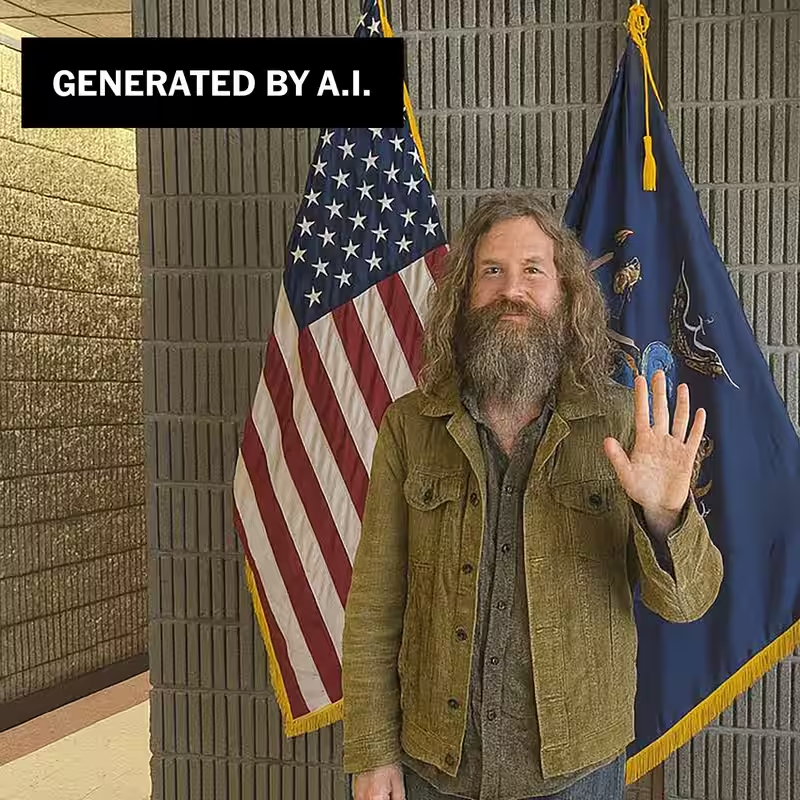Table of Contents
- What Is the AI Homeless Prank?
- Law Enforcement Sounds the Alarm
- Real-World Fallout from a Digital Joke
- Why This Isn’t Just ‘Harmless Fun’
- TikTok’s Role and AI Disclosure Rules
- Other AI Pranks Fueling the Fire
- Sources
What Is the AI Homeless Prank?
A disturbing new trend is sweeping TikTok: users are sending AI-generated images of a disheveled, homeless man inside someone’s home—sitting at the kitchen table, lying in bed, or even knocking at the front door. The recipient, often a friend or family member, is led to believe an intruder has entered their space. The prankster then films their panicked reaction and posts it online for views and laughs.
Hashtags like #aihomelessprank and #homelessmanprank have amassed millions of views, with some videos crossing the one-million-view threshold. Tutorials on how to create these fake images using free AI tools are also trending, making the prank easy to replicate.
Law Enforcement Sounds the Alarm
Police departments in at least four states—Massachusetts, Michigan, New York, and Wisconsin—are issuing urgent warnings about the prank. They describe it as not just “disturbing,” but potentially life-threatening.
“There are so many scenarios that could go wrong,” said Captain John Burke of the Salem Police Department in Massachusetts. “If someone reports an armed intruder, officers show up ready for a high-risk situation. If they confront an innocent resident or neighbor before the prank is revealed… that’s a recipe for disaster.”
Agencies Speaking Out
| Agency | Statement Summary |
|---|---|
| Yonkers Police Department (NY) | “It’s a real safety risk for officers and residents.” |
| West Bloomfield PD (MI) | “This prank isn’t funny—it’s dangerous.” |
| Shawano County Sheriff’s Office (WI) | Warns of wasted emergency resources and public panic. |
| Salem PD (MA) | Notes potential criminal penalties: up to 2.5 years in prison or $1,000 fine. |
Real-World Fallout from a Digital Joke
Multiple police departments report responding to actual 911 calls triggered by these fake images. Officers arrive on scene, weapons drawn in some cases, only to discover there’s no intruder—just a viral prank gone too far.
Worse still, vulnerable individuals—especially seniors—have suffered acute stress or medical episodes after believing a stranger was in their home. “Causing panic in an elderly person isn’t just cruel—it could be fatal,” Capt. Burke added.
Why This Isn’t Just ‘Harmless Fun’
Beyond the immediate safety risks, critics argue the prank dehumanizes people experiencing homelessness. By portraying them as threatening intruders, the trend reinforces harmful stereotypes and stigmatizes a vulnerable population.
“It’s not just a photo—it’s a narrative that says homeless people are dangerous,” said one advocacy group. “That narrative has real consequences in housing policy, public safety, and everyday interactions.”
TikTok’s Role and AI Disclosure Rules
While TikTok hasn’t issued a specific statement about the homeless prank, the platform requires creators to label AI-generated content. The company claims it “aggressively removes” content that violates its community guidelines.
However, enforcement appears inconsistent. Many prank videos remain live, often without AI disclosures, raising questions about platform accountability in the age of synthetic media.
Other AI Pranks Fueling the Fire
This isn’t the only AI-driven social media stunt making waves. A similar trend involves women sending AI-generated images of shirtless, muscular “plumbers” in their bathrooms to provoke jealous reactions from partners. While less dangerous, it highlights how easily AI can be weaponized for manipulation—even in seemingly lighthearted contexts.




